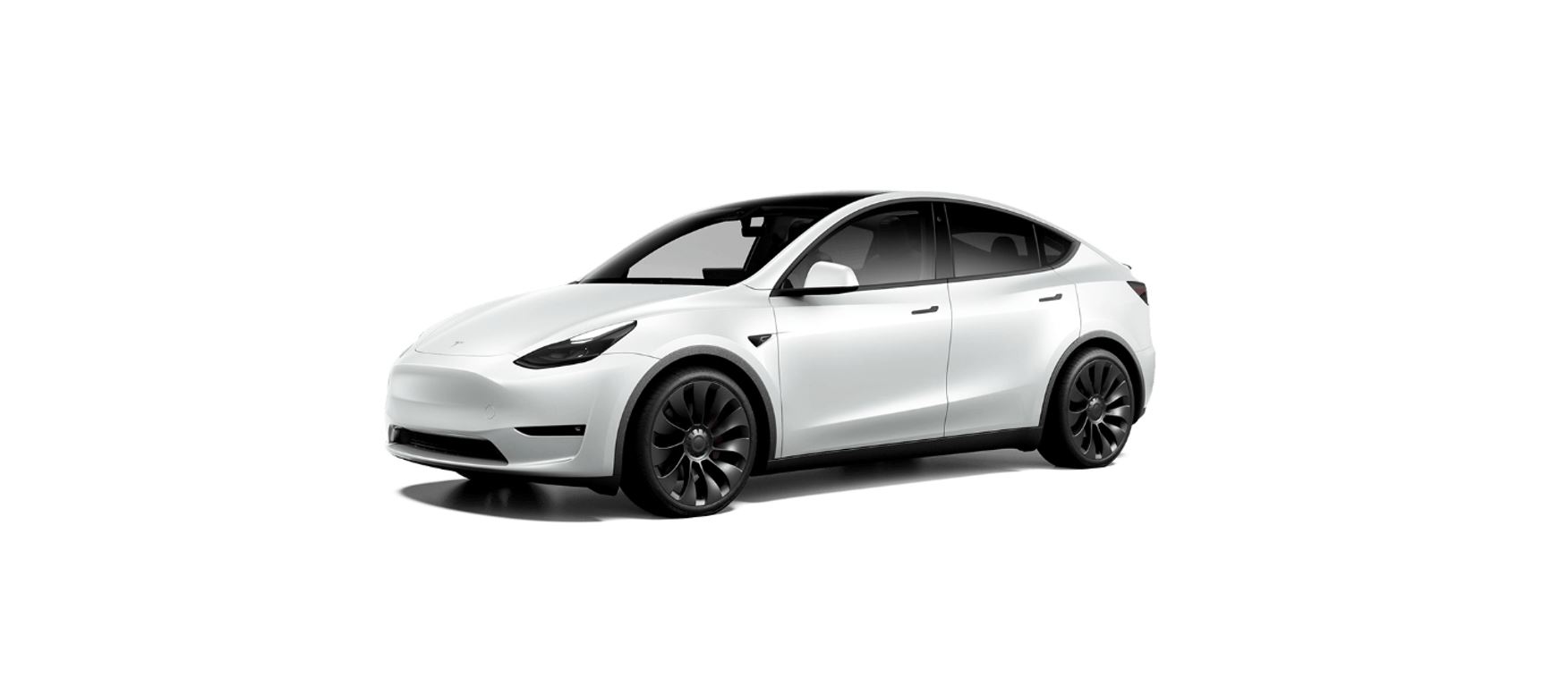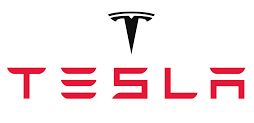
2021 Tesla Model Y Towing and Accessories
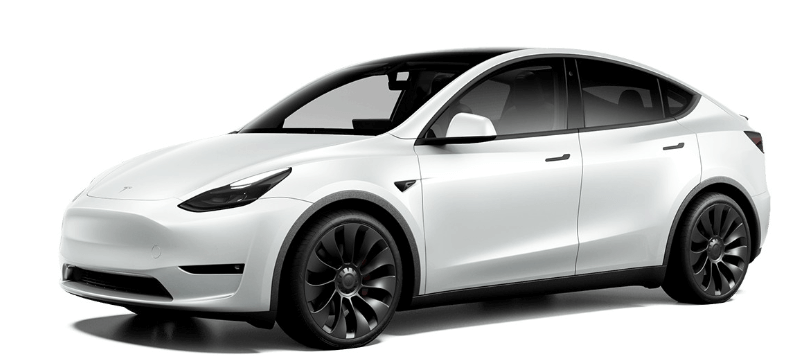
The towing package includes a 2″ x 2″ (5 cm x 5 cm) hitch receiver that can support an accessory carrier (for bicycles, skis, snowboards, etc.) or tow a trailer.
Installing and Using a Carrier
When using the tow package to carry accessories, the 2″ x 2″ (5 cm x 5 cm) square hitch receiver is designed to support vertical loads of up to 160 lbs (72 kg). Ball mounts that are compatible with the square receiver must be purchased separately.
To install and use an accessory carrier, you must first attach the ball mount to the hitch receiver (see Attaching and Removing the Ball Mount). Then, follow the instructions provided by your accessory carrier. Observe all regulations and legal requirements in your state or region that apply to carrying accessories.
The Model Y towing package includes the wiring necessary for using an accessory carrier equipped with lights (see Electrical Connections). The package also includes Trailer Mode software compatibility (see Trailer Mode).
Carrying Accessories
The hitch receiver is designed to support vertical loads up to 160 lbs (72 kg). When carrying bicycles, skis, or other items on the Model Y hitch, always check to ensure that the maximum weight is not exceeded. When calculating weight, remember to include the weight of the accessory carrier. For example, assuming the carrier weighs 40 lbs (18 kg), the weight threshold is sufficient for carrying two bicycles weighing approximately 60 lbs (27 kg) each, or four items weighing approximately 30 lbs (14 kg) each.
Trailer Towing
The maximum trailer weight (including all cargo and additional equipment), and the trailer tongue weight depend on the number of occupants in your vehicle and the tires being used. The maximum towing capacity and trailer tongue weight must never exceed the following:
| Tire Size | # of Passengers | Maximum Towing Capacity | Maximum Tongue Weight |
|---|---|---|---|
| 19″, 20″ and 21″ | up to 3 | 3,500 lbs (1,588 kg) | 350 lbs (159 kg) |
| 19″ and 21″ | 4 – 5 | 3,500 lbs (1,588 kg) | 350 lbs (159 kg) |
| 20″ | 4 – 5 | 2,300 lbs (1,043 kg)** | 230 lbs (104 kg)** |
| 19″ | 6 – 7* | 2000 lbs (907 kg)** | 200 lbs (91 kg)** |
| 20″ | 6 – 7* | Towing not permitted | – |
| 21″ | 6 – 7* | 1200 lbs (544 kg)** | 120 lbs (54 kg)** |
*Applicable only to vehicles with seven seating positions.
** You must operate within the speed limitations of your trailer and tires, and only drive at speeds appropriate for the load you are towing, the weather, road and traffic conditions, and your level of towing experience. Always obey posted speed limits and local regulations regarding speed.
For trailers with a combined loading of more than 1650 lbs (750 kg), Tesla recommends using a separate braking system with an independent controller (see Trailer Brakes). Carefully follow the instructions provided by the trailer brake manufacturer to ensure that trailer brakes are properly installed, adjusted, and maintained.
The tongue weight is the downward force that the weight of the trailer exerts on the hitch. This must not exceed 10% of the maximum trailer weight. Carrying a significant amount of equipment, passengers, or cargo in the tow vehicle can reduce the towing capacity it can handle, which also reduces the tongue weight. Maximum towing capacity is calculated assuming the GVWR (Gross Vehicle Weight Rating) is not exceeded (see Vehicle Loading).
Tire Pressures when Towing
When towing a trailer, tire pressures must be adjusted to accommodate the additional load. 19″, 20″, and 21″ tires are acceptable to use for towing. Keep tires inflated to the pressures shown below (if different, these pressures override the pressures that are provided on the Tire and Loading Information Label (see Vehicle Loading)).
| Front Tires | Rear Tires | Cold Tire Inflation Pressure |
|---|---|---|
| 255/45R19 | 255/45R19 | 42 psi (290 kPa) |
| 255/40R20 | 255/40R20 | 42 psi (290 kPa) |
| 255/35R21 | 275/35R21 | 42 psi (290 kPa) |
Before Towing a Trailer
Before towing a trailer, you must do the following:
- Inflate tires to the cold tire inflation pressure specified in Tire Pressures when Towing.
- Observe all regulations and legal requirements that apply to trailer towing. Failure to comply with regulations can compromise your safety.
- Adjust side mirrors to provide a clear rear view without a significant blind spot.
- Engage Trailer Mode (see Trailer Mode).
Confirm the following:
- Model Y rests horizontally with the trailer attached. If the vehicle is tipped up at the front and down at the rear, check that you are not exceeding the maximum towing capacity and tongue loads provided in Trailer Towing.
- Trailer lights (brake lights, turn signal lights, and marker lights) are working properly.
- The trailer tongue is securely connected to the hitch ball.
- Safety chains are properly connected between the trailer and the tow vehicle. Cross the safety chains under the tongue of the trailer to help prevent the tongue from contacting the road if it separates from the hitch. Leave enough slack in the safety chains to allow for turns and ensure that the chains do not drag on the ground.
- All trailer hitch parts and attachments, safety chains, and electrical connectors are in good condition and are properly connected. If any problems are apparent, do not tow the trailer.
- All cargo is secured.
- Wheel chocks are available.
- The trailer load is evenly distributed such that the trailer tongue weight is approximately 4-10% of the total trailer weight, without exceeding the maximum tongue weights provided in Trailer Towing.
CAUTIONLoads that are balanced over the trailer wheels or heavier in the rear can cause trailer sway, resulting in loss of vehicle control.
Towing Guidelines
Model Y is designed primarily as a passenger-carrying vehicle. Towing a trailer puts additional load on the motor(s), drive train, brakes, tires, and suspension and significantly decreases range. If you decide to tow a trailer, proceed with caution and follow these general guidelines:
- Reduce your driving speed and avoid sudden maneuvers. When towing a trailer, steering, stability, turning radius, stopping distance and braking performance are different when compared to driving without a trailer.
- Increase your following distance by maintaining at least twice the distance from the vehicle ahead. This helps to avoid situations that require heavy braking. Sudden braking may result in skidding or jack-knifing, and loss of control.
- Avoid sharp turns. Sharp turns can cause the trailer to contact the vehicle and cause damage. Keep in mind that the trailer wheels are closer to the inside of the turn than the vehicle’s wheels. Therefore, make wider turns to prevent the trailer from hitting curbs, road signs, trees or other objects.
- Periodically check the trailer lights and turn signals to confirm that the bulbs are still working. When towing a trailer, the turn signal arrows on the touchscreen flash as normal, even if the bulbs on the trailer are burned out.
- Periodically confirm the cargo is secure.
- Regularly confirm that all towing components are securely tightened.
Trailer Mode
Trailer Mode must always be active when towing a trailer. When you connect a trailer’s electrical connection while the vehicle is in Park, Model Y automatically engages Trailer Mode. When you disconnect the trailer’s electrical connection, Trailer Mode does not automatically disengage. To manually engage or disengage Trailer Mode, touch on the touchscreen. One of the following indicators displays:



Some Autopilot features, as well as rear parking sensor functionality, may not be available when Trailer Mode is enabled. In addition, these features operate differently:
- Traffic-Aware Cruise Control increases the following distance from the vehicle in front of you.
- Side collision warnings are active but automatic steering interventions are disabled.
- The braking force provided by Automatic Emergency Braking (see Collision Avoidance Assist) may be limited. Therefore, stopping distance may increase.
Trailer Brakes
When towing a loaded trailer that weighs more than 1650 lbs (750 kg), Tesla recommends that the trailer be equipped with its own brake system adequate for the weight of the trailer. Ensure compliance with local regulations. A brake controller must be purchased separately, and the required 4-pin pigtail connector can be ordered from Tesla Service.
Follow these steps to connect a brake controller:
- Connect the wiring on the brake controller to the appropriate locations on the 4-pin pigtail connector.
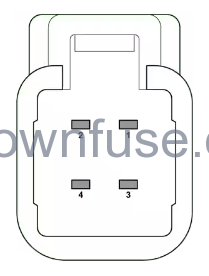
- Remove the cover located under the dashboard in the driver’s side footwell.
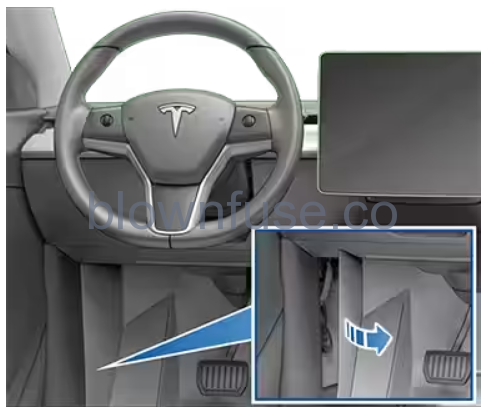
- Peel back the carpet to expose the vehicle’s 4-pin connector on the wiring harness.
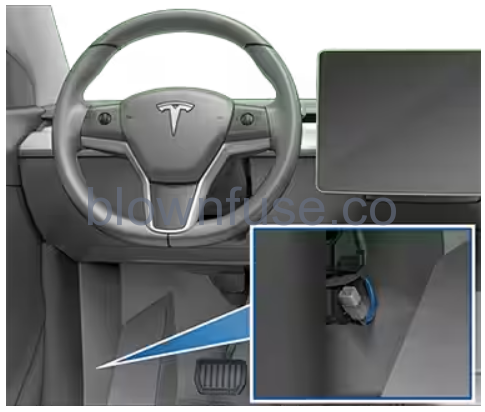
- Connect the pigtail connector to the vehicle wiring connector.
Parking with a Trailer
Whenever possible, avoid parking on a grade. However, if parking on a grade is absolutely necessary, place wheel chocks under the trailer wheels. Consider having someone help you with these steps:
- One person presses and holds the brake pedal.
- A second person places the wheel chocks under the wheels on the downgrade side of the vehicle’s tires.
- When the chocks are in place, release the brake pedal and ensure the chocks hold the weight of the vehicle and trailer.
NoteWhen testing chocks, ensure that Vehicle Hold (see Vehicle Hold) is not engaged. If Vehicle Hold is braking Model Y, the Vehicle Hold indicator light displays on the touchscreen. To disengage Vehicle Hold, press and release the brake pedal.
- Place the vehicle in Park.
Trailer Sway Mitigation
When trailer sway is detected, the electronic stability control system attempts to apply the appropriate amount of braking to minimize trailer sway. The touchscreen briefly displays the traction control system indicator. Pressing the brake pedal when the system is actively braking to mitigate trailer sway does not cancel this automatic braking.
Attaching and Removing the Ball Mount
The Model Y towing package does not include a ball mount. You must purchase a ball mount suitable for the type of trailer you are towing. The Model Y hitch receiver supports a ball mount with a length of up to 8.5” (22 cm) and a rise of up to 0.75” (2 cm). Do not use any type of drop ball mount that does not meet these requirements.
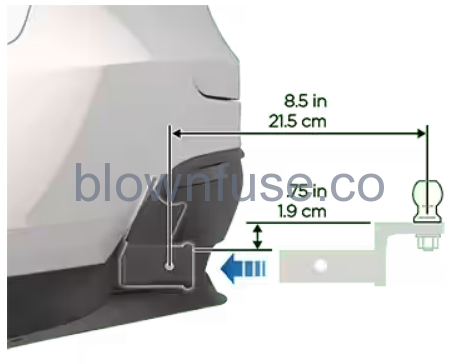
To attach a ball mount:
- Remove the dust cover from the hitch housing by using a small object, such as a flat screwdriver, to pry between the dust cover and hitch housing. Store the dust cover in a secure location.
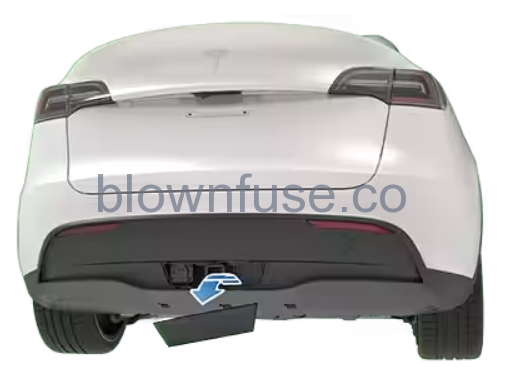
- If necessary, remove the cotter pin from the locking bolt and slide the locking bolt out of the hitch assembly.
- Slide the ball holder into the hitch assembly.
- Align the hole in the ball holder with the one in the hitch assembly.
- Slide the locking bolt through the hitch assembly/ball holder.
- Insert the cotter pin in the hole at the end of the locking bolt.
To remove a ball mount:
- Remove the cotter pin from the locking bolt and slide the locking bolt out of the ball holder/hitch assembly.
- Pull the ball holder out of the hitch assembly.
- Re-install the dust cover for the hitch housing and store the ball mount in a secure location.
Electrical Connections
Regulations require all trailers to be equipped with tail lights, brake lights, side marker lights, and turn signals. To provide power for trailer lighting, a built-in 7-pin wiring connector is provided near the hitch support’s wiring plugs for most types of trailers. Plugging in trailer wiring into the Model Y electrical connector automatically engages Trailer Mode (see Trailer Mode).
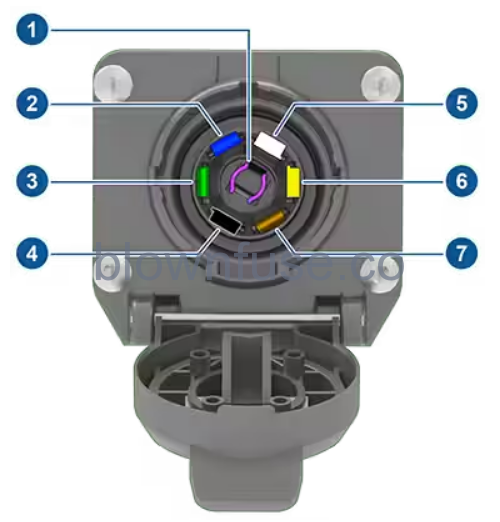
- Reverse Lights
- Brake Controller Output
- Right Turn Signal and Brake Light
- Low Voltage Power (if equipped)
- Ground
- Left Turn Signal and Brake Light
- Tail Lamps
Impact on Range
Towing a trailer increases vehicle weight and drag. As a result, driving range can decrease significantly. Although Trip Planner attempts to adjust estimates based on Trailer Mode, actual energy consumption may vary. Plan trip lengths and charge destinations accordingly.
